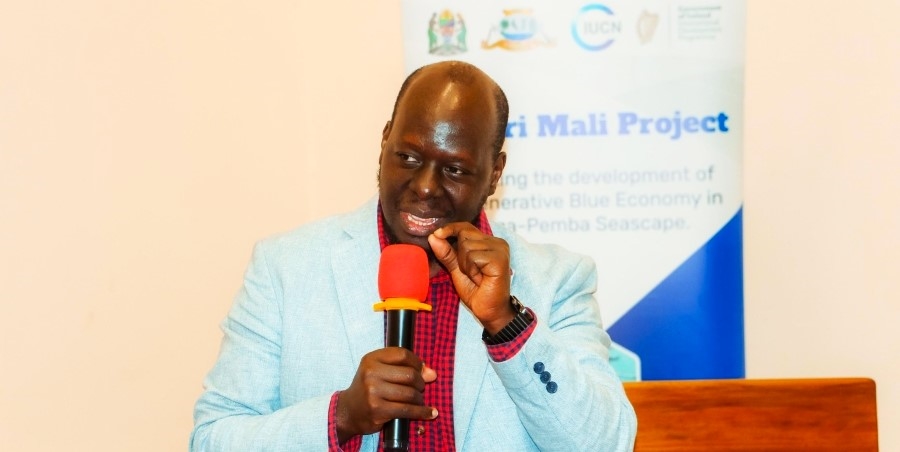In efforts to restore the marine ecosystem within the country’s Indian Ocean waters, Tanzania is embarking on an ambitious project to green up the sea bed.
With support from the International Union for Conservation of Nature (IUCN) and involving local fishing communities striding the shorelines in Tanga Region as well as Pemba Isles, Tanzania has begun to replant sea grass on the shallow ocean base.
The restoration of marine vegetation also involves the sowing of Mangrove trees along the shoreline as well as initiating a program to protect coral reefs.
Scribe members of the Journalists Environmental Association of Tanzania (JET) recently visited the Moa Village in Mkinga District of Tanga Region, where they witnessed ongoing restoration of seagrass.
The Mkinga District Fisheries officer, Ezra Katete revealed that their precinct on the mainland will be planning and restoring seagrass blanket on the ocean floor to cover a shoreline distance of 71 kilometers.
“The number of fish has been dwindling, first due to increasing human activities, but secondly because of climate change which brings about ocean acidification,” stated the Fisheries officer.
Katete explained that seagrass, seaweeds and mangrove that thrive on photosynthesis absorb carbon gases during the process and therefore help to refresh the sea waters.
On the other hand, at least 90.4 hectares of mangroves have been restored along the Indian Ocean Coastline striding Tanga on the Tanzanian mainland and Pemba in Zanzibar Isles.
That was previously stated during a special training workshop on Blue Economy organized by the International Union for Conservation of Nature (IUCN) for writers and reporters who are members of the Journalists Environmental Association of Tanzania (JET) taking place in Tanga.
According to the IUCN Nature-based Solutions Officer, Suleiman Masoud Mohammed, the Mangrove restoration projects have been conducted in Mkoani and Micheweni Districts of Pemba, in the Isles, as well as Mkinga and Pangani Districts of Tanga on the mainland.
“Mangroves play important roles as breeding areas for various marine creatures including fish and crustaceans,” stated Mohammed, adding that the coastline trees also act as natural barricades protecting the land from sea erosion.
Mangroves also serve as a sieve that filter out terrestrial garbage from entering the sea, regulate the temperature and like any other trees they are also carbon sinkers.
But restoration of mangroves is more than just protecting the shores and conserving the environment, communities in the coastal areas have also started hatching economic activities from the trees.
“They are now tapping mangrove honey, a new type of sourish sweet syrup also commanding a great market in a number of local and overseas markets,” explained Joseph Olila, the IUCN Tanzania Program Manager, Coastal and Ocean Resilience.
According to Olila, restoring mangrove is a very challenging task, such that managing to accomplish more than 90 hectares is not something to be taken lightly.
People have been depleting the seaside vegetation cover by harvesting mangroves for firewood, boatmaking and house construction, among other uses.

Tanzania boasts more than 1400 kilometers of coastline striding the Indian Ocean, however the country, especially the mainland has not managed to tap efficiently from the blue economy.
“At least people in Zanzibar are making use of the sea to generate income and build the Isles economy, in fact the archipelagos have managed to tap into the blue economy by over 80 percent now,” he pointed out.
The objectives of the training and the field visit that came later was to strengthen JET journalists’ understanding of the blue economy through workshops and field exposure, equipping them with the skills to advocate for Tanzania’s Blue Economy in Tanzania.
It targeted to increase awareness, understanding, knowledge and skills of the blue economy and marine conservation among Tanzanian media personnel and strengthen the capacity of journalists and local media houses to report on the blue economy effectively, accurately, and adequately in the country.
IUCN provided the journalists with hands-on learning experiences through engagement with beneficiaries and blue economy initiatives under the Bahari project, enabling journalists to capture impactful stories.

